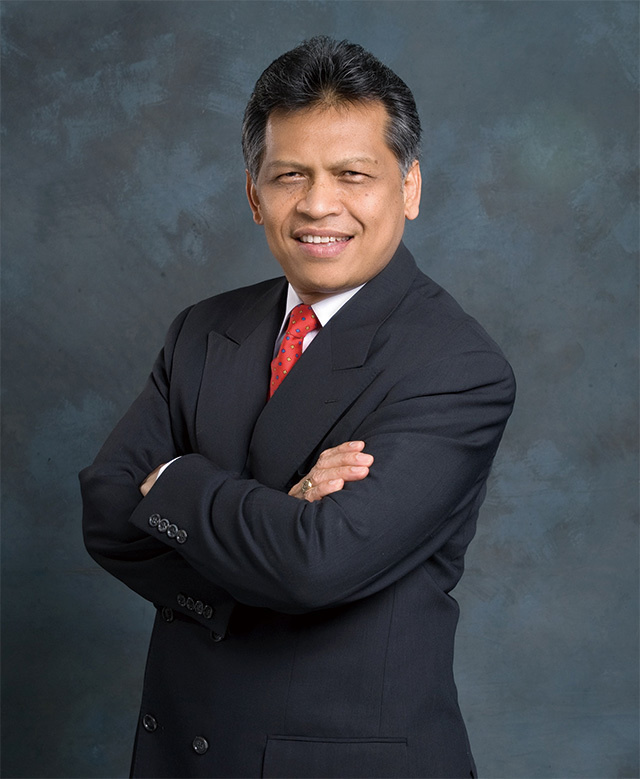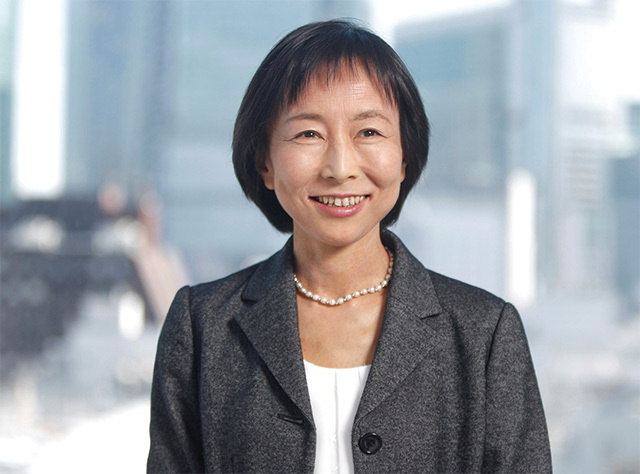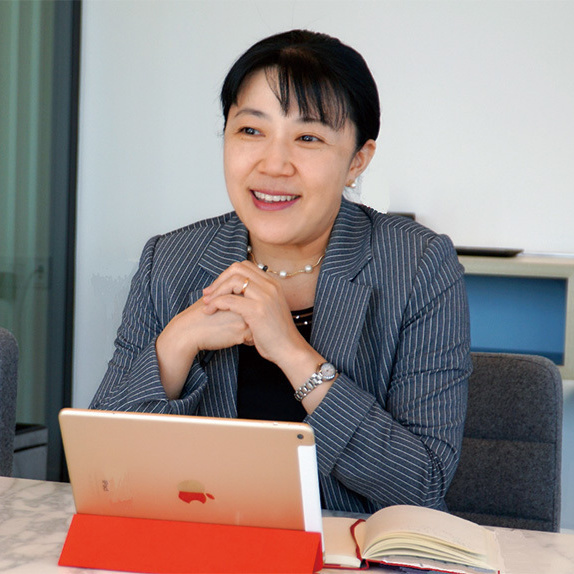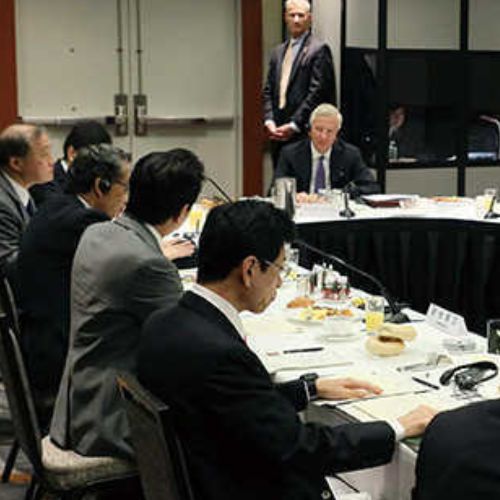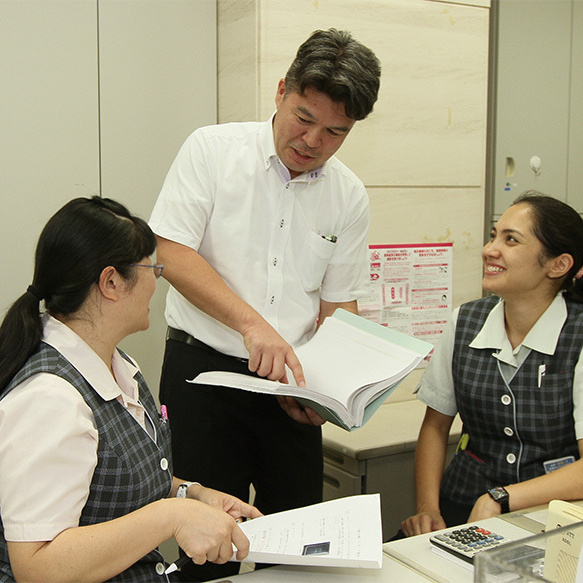Ten years after the Association of Southeast Asian Nations (ASEAN) was established, Japan was already poised to refashion its relationship with the newly independent and increasingly assertive states of Southeast Asia. The original five member states— Thailand, the head of the pact, having never been colonized, along with Malaysia, Indonesia, the Philippines and Singapore—were also trying to define their own separate and distinct identities on the global stage.
Dr. Surin Pitsuwan
Served as the Secretary General of ASEAN from January 2008 to December 2012, during which he implemented the ASEAN Charter and prepared the region to enter into the ASEAN Community in 2015. Native of Nakorn Sri Thammarat, Thailand. Holds an MA and Ph.D. in political science and Middle Eastern studies from Harvard University. Currently engaged in the promotion of regional integration in East Asia, along with educational and political reform efforts in Thailand. Serves as Board and Council of many international organizations concerned on human rights and democratization, and is a frequent speaker at various international conferences.
Japan came onto the ASEAN landscape knowing that it had some "burden of history" to manage with and among the ASEAN Member States. By the late 1960s, Japanese investment and factories were moving into the great expanses of this resource-rich region with a growing population, in a strategic location dividing the Indian and the Pacific Oceans. Japanese businesses and industries had a new resolve to turn this unique geographical landscape into a production hub, but they began to face antagonism and a deficit of trust among the people of Southeast Asia. Incidents of opposition to Japanese presence and investment, productive and beneficial as they might be, were occurring in many countries.
The 1977 visit of Japanese Prime Minister Takeo Fukuda to the region transformed the perspectives of the relationship on both sides. Foundation was laid, and momentum was created on a more rational, accommodating and sensitive path forward.
Japan became more engaged, and more investment flowed in, from trade and mercantile exchange to constructive political and strategic involvement.
The Way Forward
ASEAN has become a Community of Nations, with connectivity and networking between all major countries and economies. ASEAN people have become increasingly prosperous, with more of them joining middle class status.
This newly acquired mode of effective co-existence is leading to more prosperity, more consumption, more investment and more trade.
Japan, one of the first Dialogue Partners of ASEAN, has been generous in development assistance and has placed its full confidence in the region with political and strategic support in Cambodia, East Timor, and Myanmar.
But ASEAN is also facing many challenges to which Japan is equipped to offer solutions. The ASEAN member states mostly, if not all, lack in capacity in the areas crucial to their own future prosperity, i.e. science, technology and innovation.
ASEAN NEEDS ITS OWN HOMEGROWN SCIENCE,
TECHNOLOGY AND INNOVATION
Japan will have to treat ASEAN as a landscape of opportunity to forge human progress, develop science, promote research and incubate innovation. This technology deficit could possibly stymie ASEAN and relegate it to the Middle Income Trap (MIT). Whatever impressive level of prosperity it has achieved so far, it needs its own science and innovation. The region cannot remain dependent on external sources of innovation. ASEAN-produced innovation should not diminish Japan’s technological advantage; the combined strength of the two sides should raise the advantage of both. A stronger ASEAN will contribute to the prosperity of Japan in the long run.
ASEAN NEEDS TO CONSTRUCT ITS OWN REGIONAL DEMANDS AND MARKETS
The regional and global environment of cooperation has changed dramatically. Globalization and multilateralism have served East Asian and Southeast Asian community-building well. But both have fallen from grace; both have been threatened after delivering market access, a leveled playing field and a new “liberal order” opening up the region for investment and export.
With restraint and limitation to globalization and multilateralism, the region has no other alternative except more effective integration among its own nations.
Japan offers strong leadership and support for a new regional trade architecture among the ASEAN Plus Six, or Regional Comprehensive Economic Partnership (RCEP). We must create our own regional market and enhance our own regional demand. We need to create an alternative to the shrinking and disappearing global markets. Japan, with all its technical knowhow and economic prowess, can help construct this new regional economic platform.
THE SOFT-POWER OF JAPAN CAN BE A SAVING GRACE FOR ASEAN
The soft-power of Japan is very relevant to ASEAN.
Discipline, perseverance, preservation of environment, aesthetic values, social cohesion, and overall quality of life are elements that Japan can also share with the people of ASEAN. The new ASEAN Middle Class wants more than just materialistic accumulation and monetary wealth. More people-to-people exchange, cultural cooperat ion, yout h and educat ional programs, journalistic exchange, and more investment in civil society cooperation would go a long way in fostering a new dimension of relations between Japan and ASEAN.
In the final analysis, what we should aim for is sustainable and inclusive growth that will raise the quality of life of most of the 630 million people of ASEAN. Japan has contributed a great deal in the past 50 years of ASEAN, and has been the most generous Dialogue Partner of ASEAN. But there is room for improvement in the modality and issues of focus. Growth alone is not producing a region of peace and prosperity; in fact, the widening gap in income disparity, along with inequity in opportunity and political influence, has led to more tensions and instability in many of ASEAN’s societies.
Japan too will need to make sure that the fruits and benefits of its cooperation with, support for, and investment in ASEAN will be sustainable and assured well into the future. For that, Japan and ASEAN will need a course adjustment in their journey of friendship that is different from that of the past 50 years.
We are entering a new chapter of our relations. Countries are withdrawing from global engagement, looking more inward, and preoccupying themselves more with domestic challenges. Japan cannot afford to disengage from its relation with ASEAN. Its longestablished trade, enormous investment and future prosperity depend on the economic health of ASEAN.
ASEAN is not just an investment field; it is also a region to be transformed with the many soft-powers that Japan possesses. Thus far Japan’s relation with ASEAN has been courteous and productive. Softly, Japan can continue to lead and show the way for a better future for all of us, a new generation of Asians in an emerging Asia-Pacific Century.


























